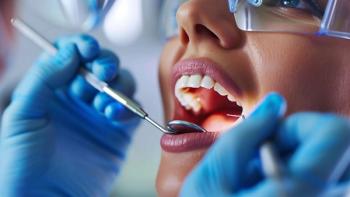
Fighting for a Modern-Day Understanding of Cancer
Cancer treatment isn't what it used to be, and it is important that patients and their loved ones understand that.
As the sister of a cancer survivor and somebody who has immersed herself in the world of cancer, I have heard many physicians tell somebody that they have cancer. Upon hearing those words, I am taken back to that moment in time when I first heard a doctor say the same thing to my sister.
Even after having heard those words many times over, they are still jarring. I have seen patients react in various ways, with one even saying, “You are wrong. You need to check again. I simply can’t have cancer. I just don’t.”
Of the varying reactions, the most common is exactly how my sister reacted. She wanted to know how — more specifically, how long she had to live.
No matter the age, this is a common question. Regarding my sister, she was 27 years old and, up until that exact moment in time, she thought she had an entire lifetime ahead of her. It was only upon hearing she had cancer that any other reality crept into her brain. It was at that time that I think she withdrew into herself as a way to cope.
My family and I were left to deal with what a fight against cancer really looked like. My parents, who come from a distinctly different generation, had an expectation of a slow and painful process — one with horrific treatments and a journey that likely would end in death.
By contrast, I was 23 years old and had never had any firsthand experience when it came to cancer. Therefore, I did not have any idea what watching somebody go through cancer might look like. Hearing my dad explain what he thought he knew about cancer created an instant state of fear. Thinking about my sister enduring that was horrific.
However, what my dad thought he knew about cancer was largely different than what actually transpired, mostly due to how far we have come and the strides that have been made within the cancer community.
In reality, of those diagnosed with cancer, the majority will live beyond five years. For Hodgkin’s lymphoma, there is a remarkably high five-year survival rate of 90 percent, according to the American Cancer Society. Even when looking at the most difficult cancers to fight, we have made stunning advancement with drugs like immunotherapies to help those with treatment-resistant cancers live longer and better lives.
While we obviously have a long way to go, how we treat and approach cancer has definitely improved from when my dad was a child in the 1950s. While none of the facts above are a cure, they are a stark contrast to the negative and harsh reality that my dad thought his daughter would face upon her diagnosis.
So, as I continue to watch people’s reactions to being diagnosed with cancer, I am hopeful that their expectations change — just as the treatments did. It is my hope that patients have less fear and more hope, and that despite how difficult a journey one faces with a cancer diagnosis, they, too, understand that everything possible is being done for them to gain remission.




